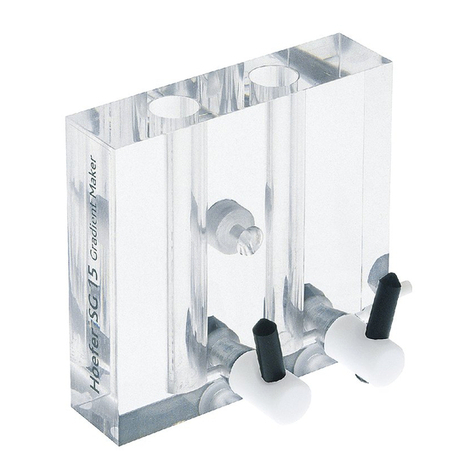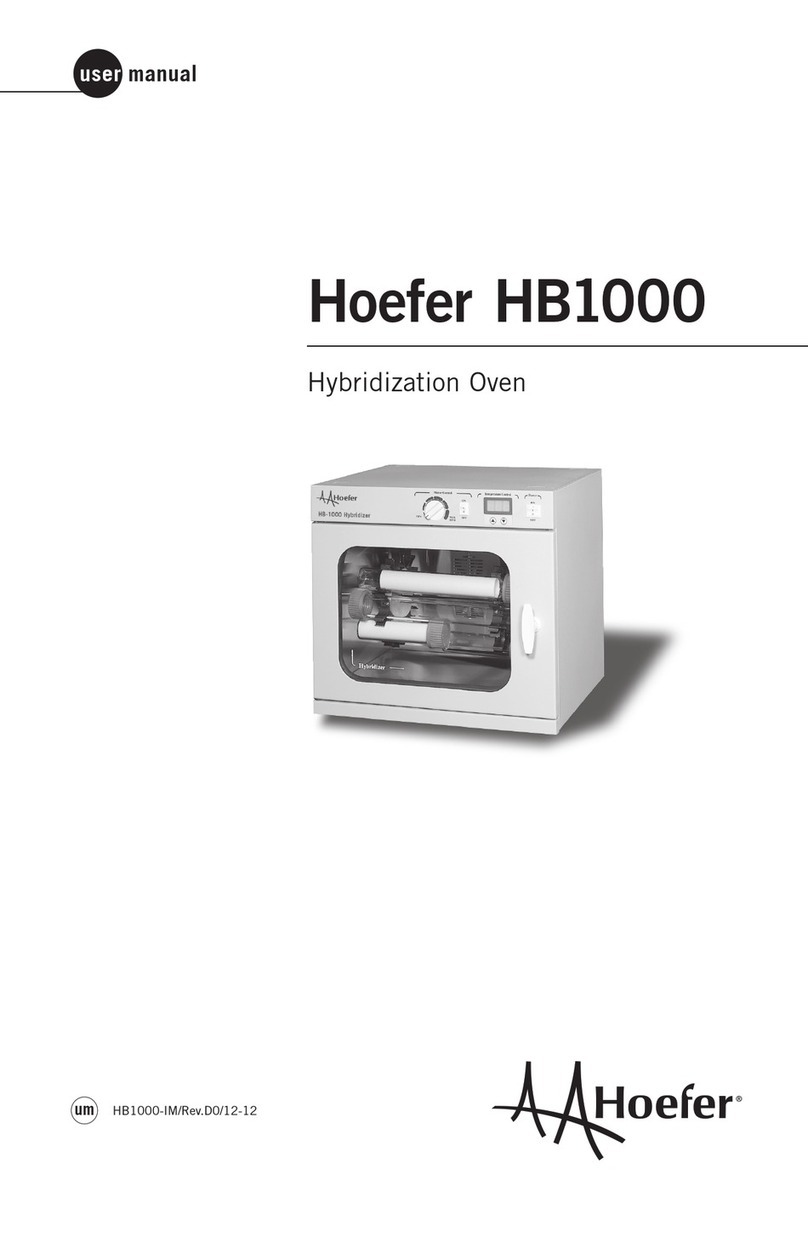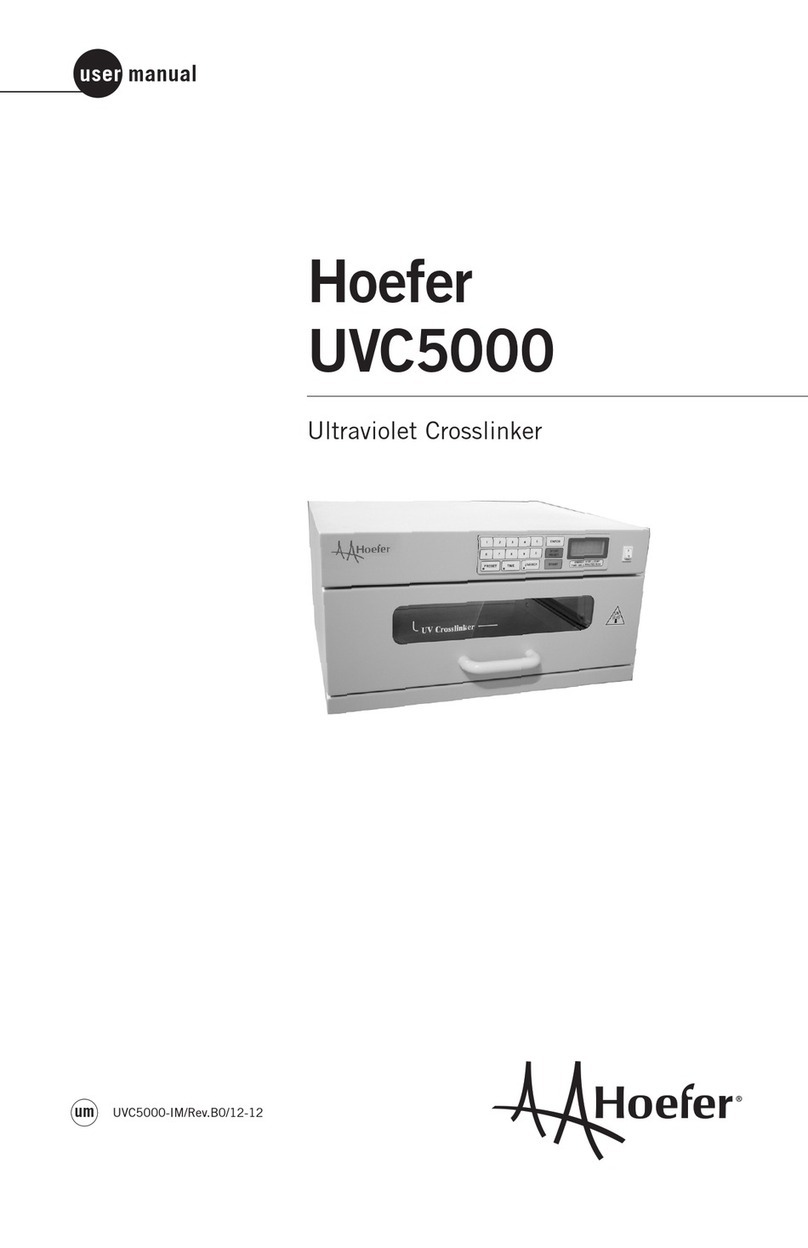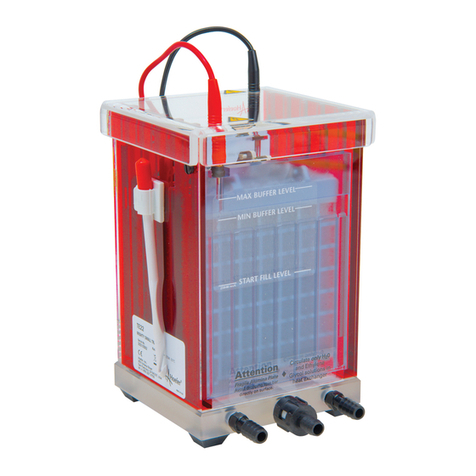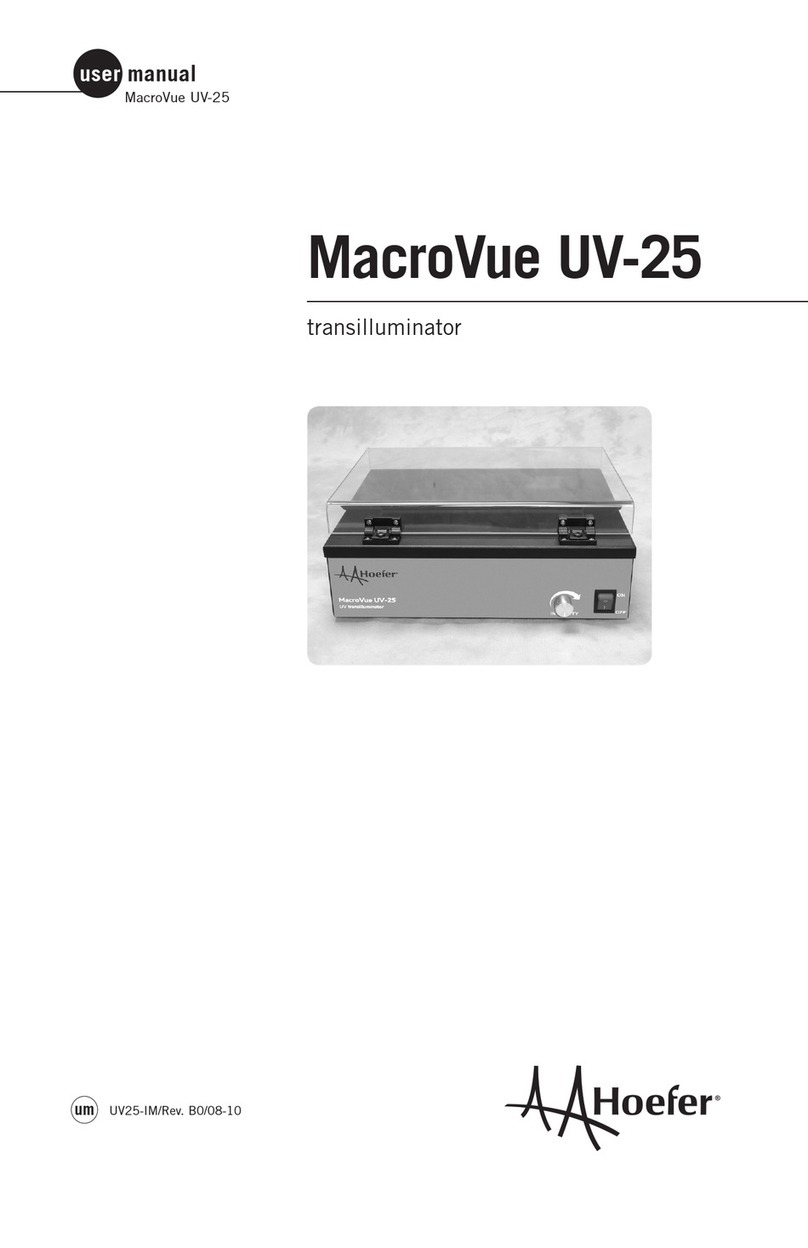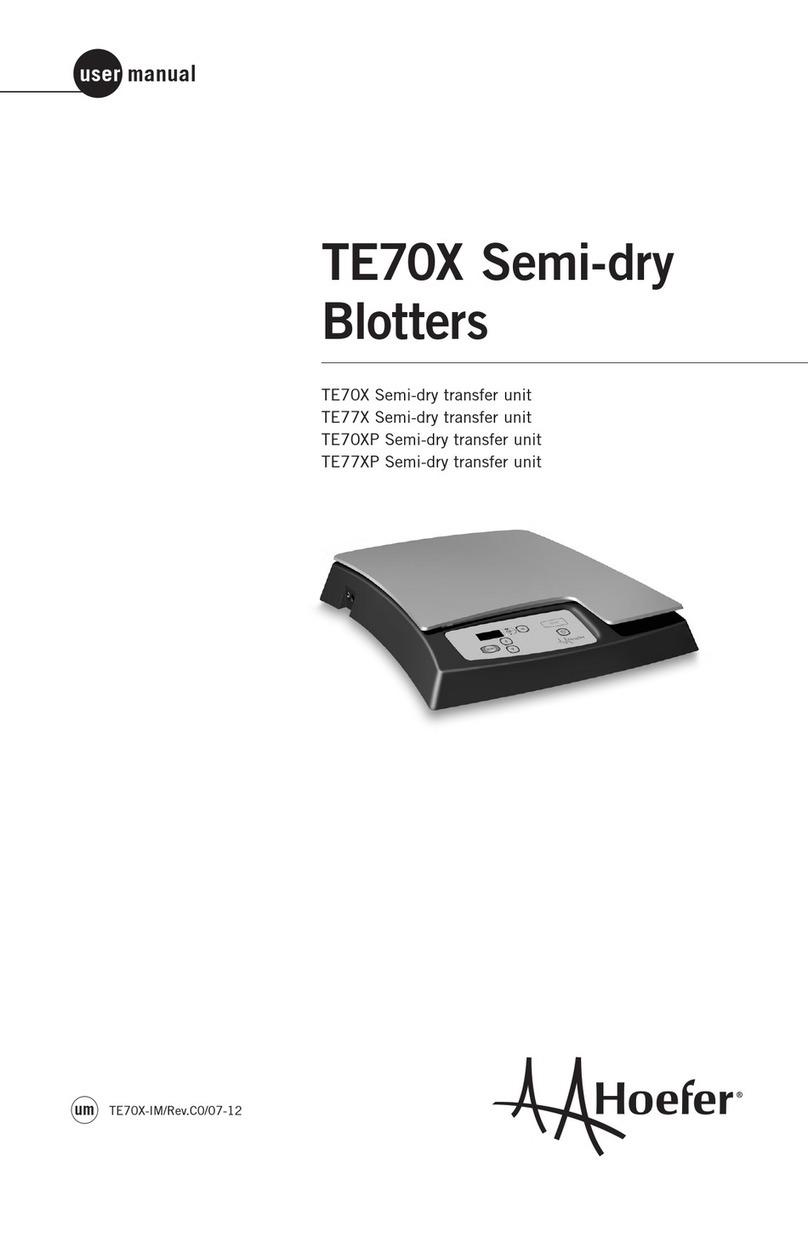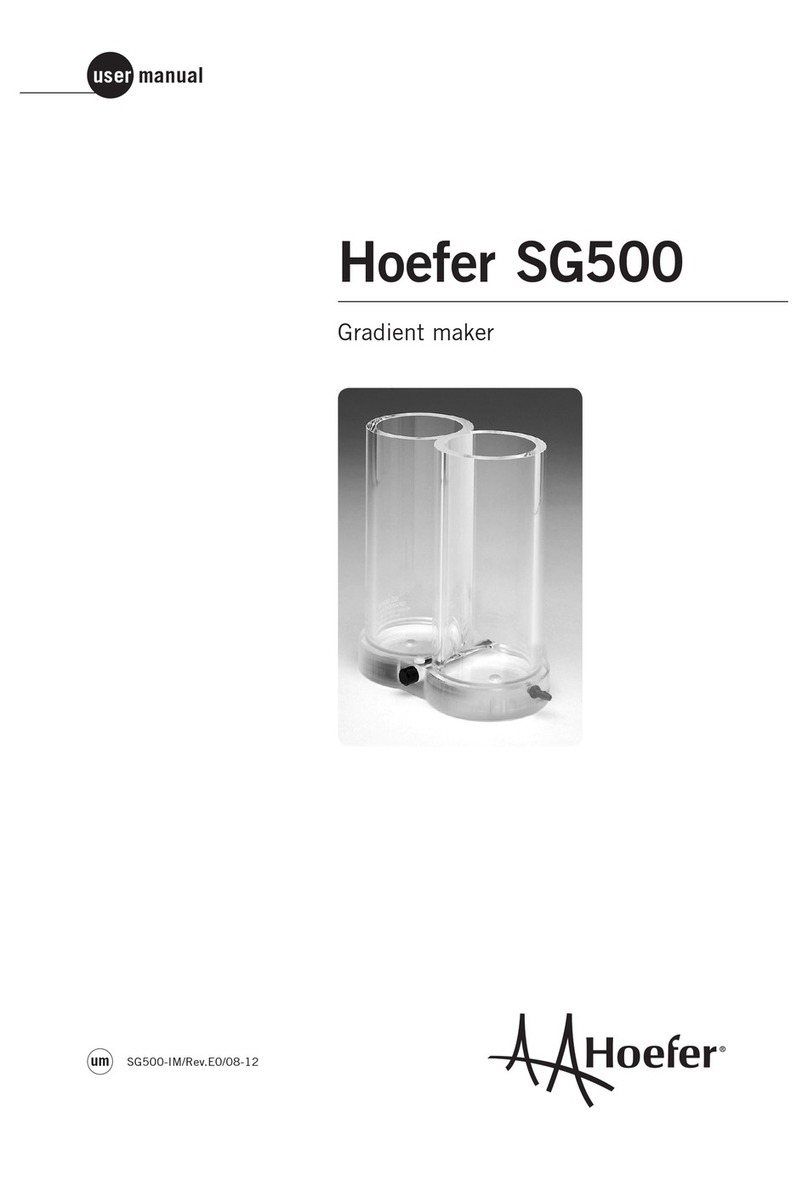
• pii
English
Safety warnings and precautions
• Only use a power supply that is CE marked or
safety certified by a nationally recognized testing
laboratory.
• Turn all power supply controls off before plugging
in or removing the power leads, and only connect or
disconnect leads when the safety lid is in place.
• Do not operate at temperatures above 45 °C.
All plastic parts are rated for 45 °C continuous
duty. Overheating will cause irreparable damage to
the unit!
• If this equipment is used in a manner not specified
by the manufacturer, the protection provided by the
equipment may be impaired.
• Only accessories and parts approved or supplied by
Hoefer, Inc. may be used for operating, maintaining,
and servicing this product.
• Utiliser seulement un générateur marqué CE ou
dont la sûreté a été certifiée par un laboratoire de
test nationalement reconnu.
• Eteindre le générateur avant de brancher ou de
débrancher les prises. Le couvercle de sécurité doit
être en place avant de brancher ou de débrancher
les prises au générateur.
• Ne pas utiliser à une température au dessus de
45 °C. Toutes les pièces en plastique sont prévues
pour résister à une température constante de 45 °C.
Toute surchauffe causera des dommages irrépara-
bles à l’unité.
• Si cet appareil est utilisé de manière incorrecte ou
non approuvée par le constructeur, la protection
fournie par l’appareil peut etre altérée.
• Seuls les accessoires et pièces détachées approuvés
ou fournis par Hoefer, Inc. sont recommandés pour
l’utilisation, l’entretien et la réparation de
ce produit.
Français

